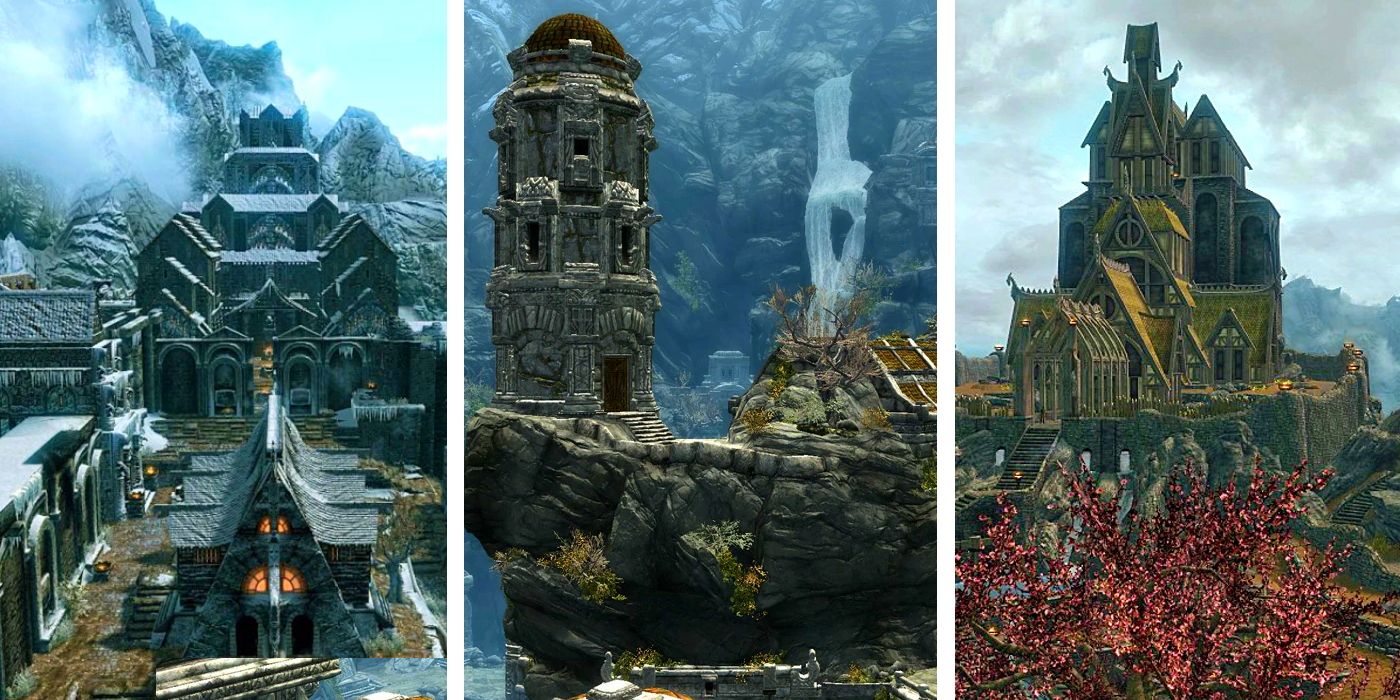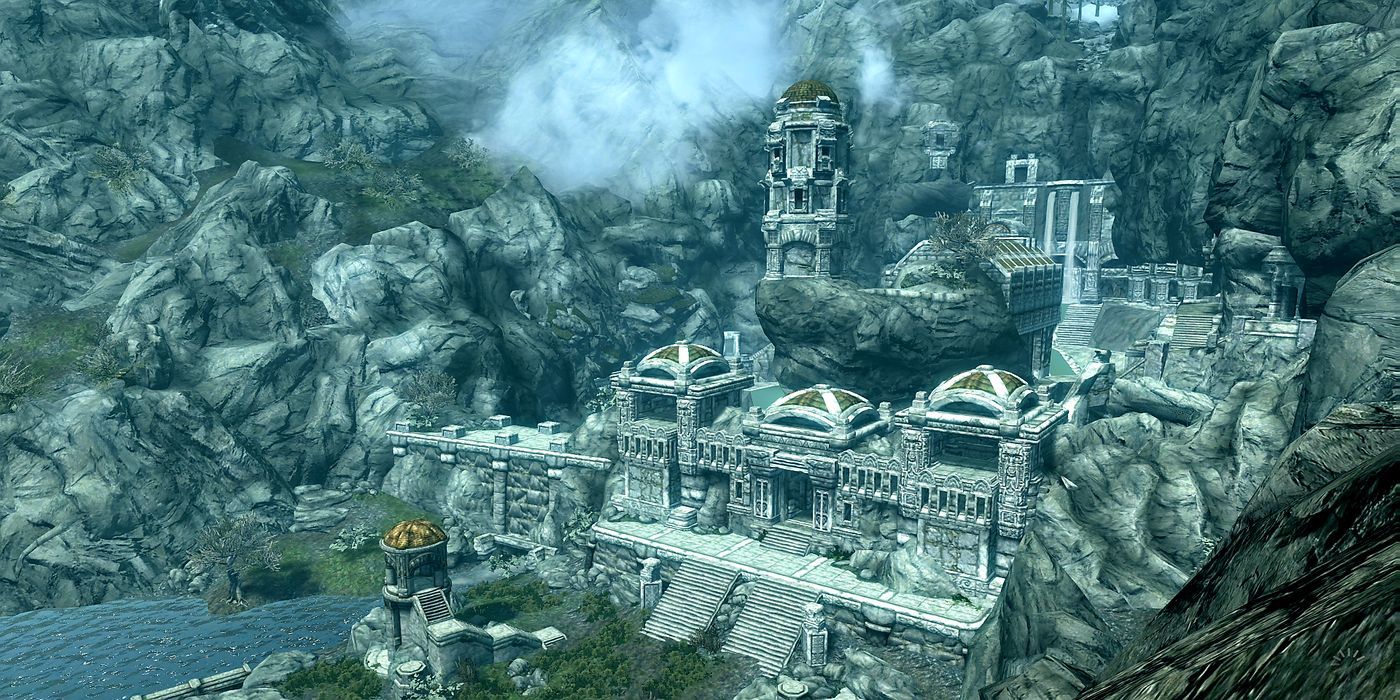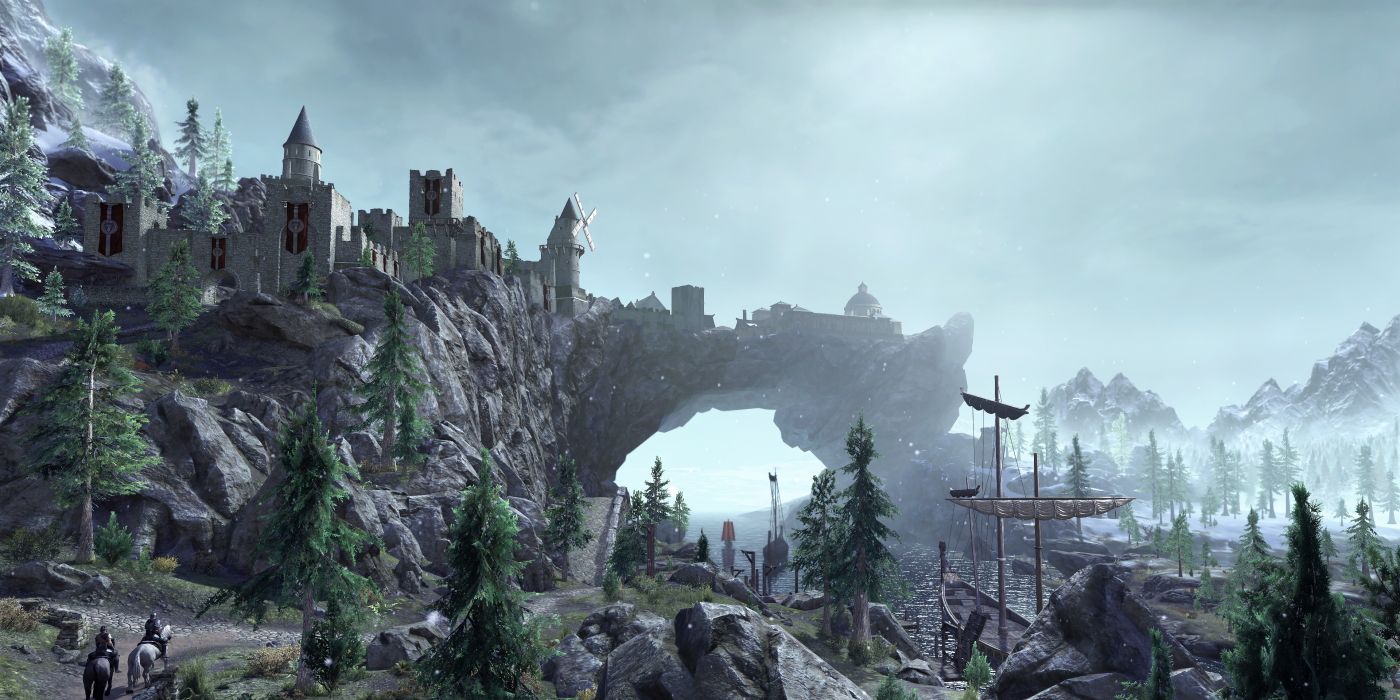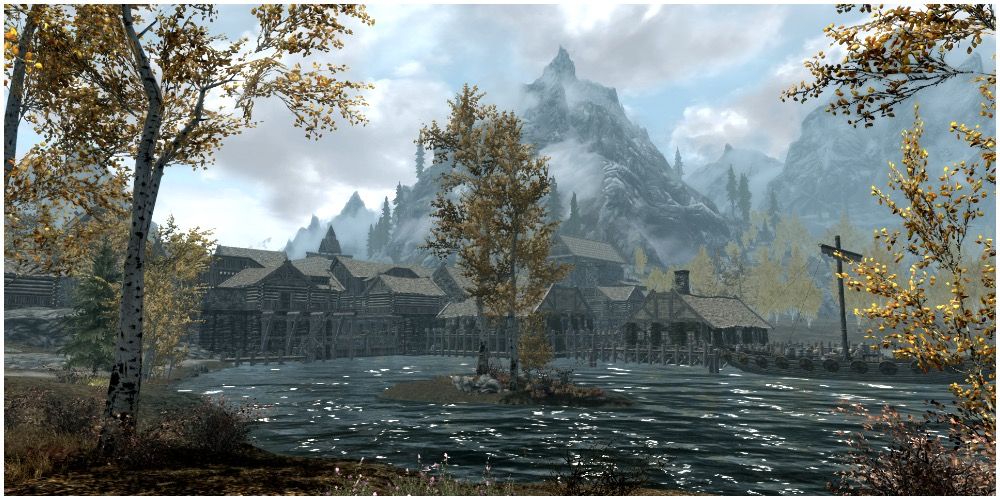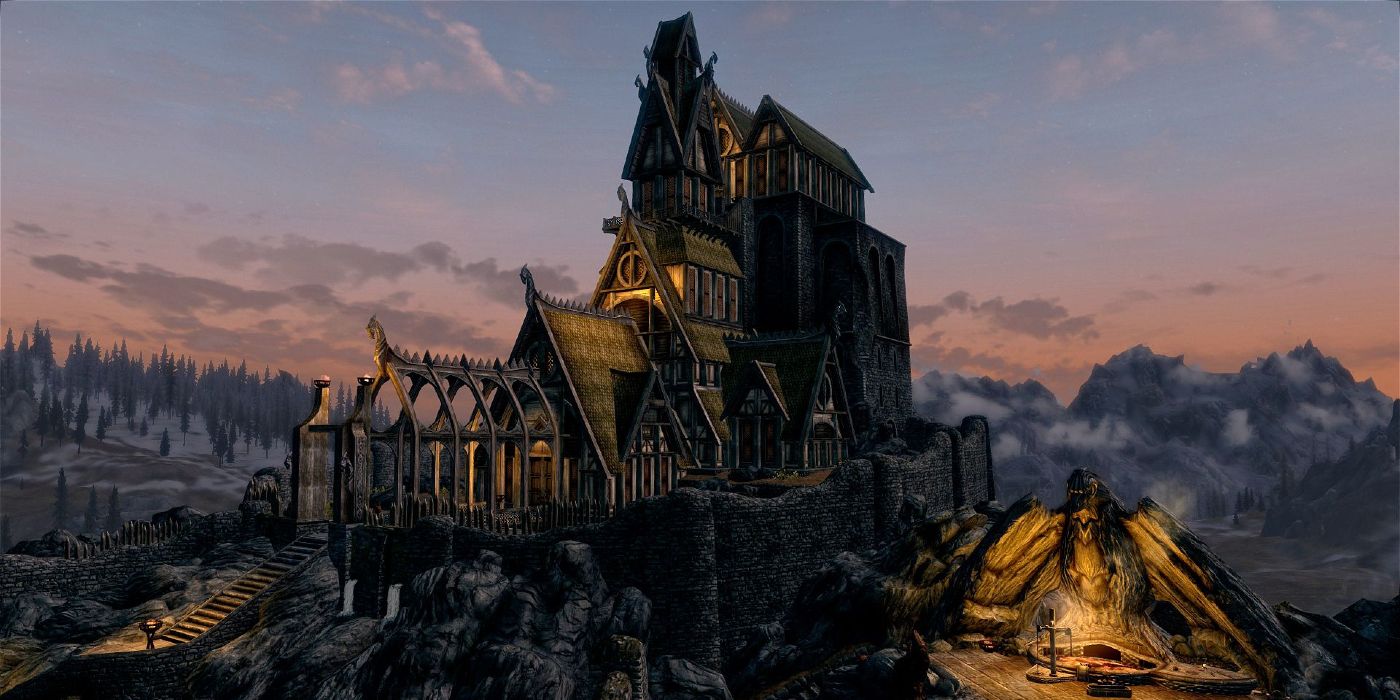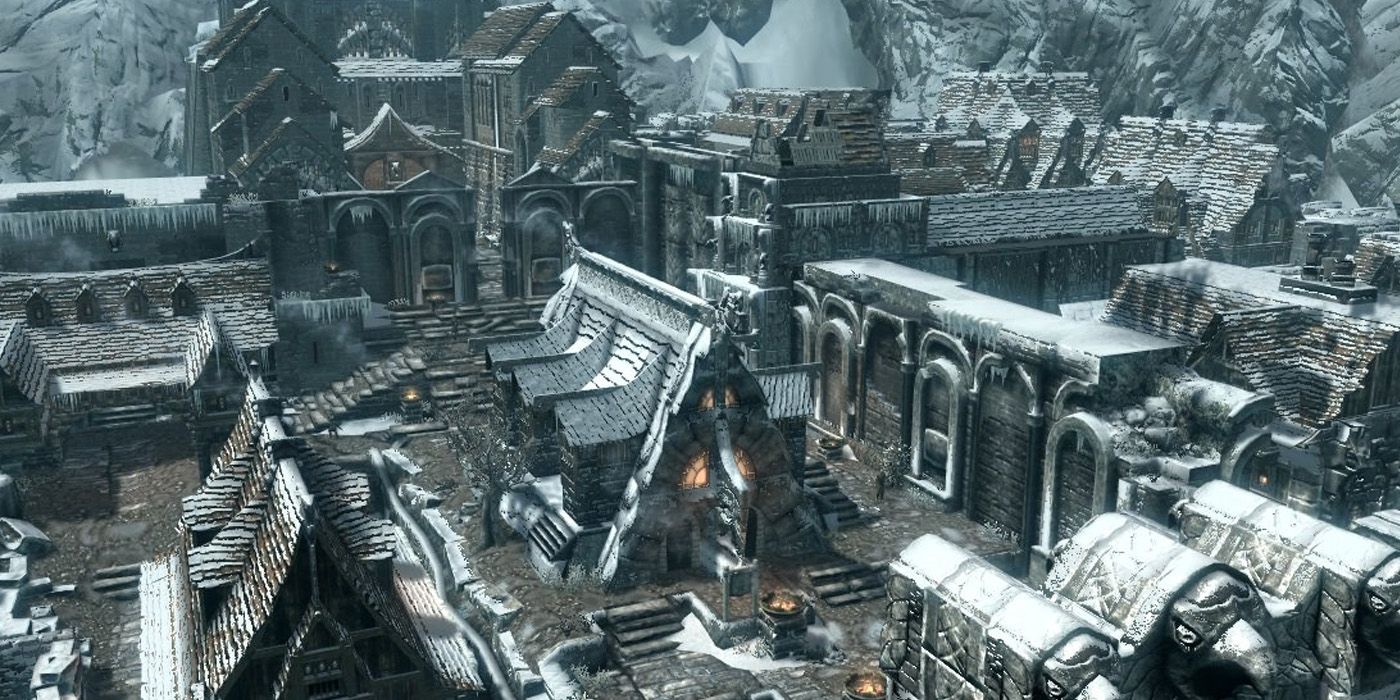With nearly ten years passing since Skyrim's release, most Elder Scrolls fans know about every side-street, every quest, and every character in the game's cities. What they might not know, however, is some of the interesting and sometimes surprising lore behind the province's hold capitals. In many cases, history seems to repeat itself.
Skyrim's cities are some of the oldest human settlements in Tamriel. Not all were built by humans, however, and some have strange connections to the darker side of Skyrim's story.
Markarth
Markarth long predates humanity's dominance of the province. The city was originally the surface level of Nchuand-Zel, a Dwemer city whose ruins can be found running beneath Markarth's streets. When the Dwemer mysteriously disappeared during their war with the Chimer, who later became the Dark Elves, the city was left empty.
Soon, however, the ghost town was overtaken by Reachmen. In the First Era the Nord Jarl of Whiterun known as Olaf One-Eye rose to power, and conquered the city. Olaf can be encountered as a Draugr during the bard college storyline, and is responsible for killing the dragon Numinex using the Voice. Numinex's skull sits above the Jarl's throne in Whiterun.
Under Tiber Septim, Markarth was home to the Imperial College of the Voice, which spread the teaching of the Voice as a revived ancient form of Nord warfare. During the Great War between the Empire and the Aldmeri Dominion, the Reachmen known as the Forsworn attempted to take the weakened city, successfully holding it for two years.
According to some, the Reachmen managed their land fairly, even trying to get their independence recognized by the Empire. Markarth was eventually reclaimed by the forces of Ulfric Stormcloak, but when he allowed Talos worship, the city drew attention from the Dominion. Ulfric's brutality against any Nords or Reachmen who opposed him also drew attention. His expulsion from the city was one of the key reasons for Skyrim's Civil War.
Solitude
The Civil War in Skyrim only began in earnest, however, when Ulfric travelled to Solitude and slew Skyrim's High King Torygg in 4E 201. While battling for the position of High King was a tradition, Ulfric bucked convention by killing Torygg after defeating him.
Solitude was originally the last city conquered by High King Olaf One-Eye in the First Era, and his brutal siege led to long-lasting bitterness and the tradition of the Burning of King Olaf. Over the years, Solitude had a strained relationship with both the rest of Skyrim and occasionally the Empire, only held together by political marriages to the Emperor's relatives.
Despite being the heart of Imperial power in Skyrim by the time the game is set, Solitude once led a rebellion against the Empire. The War of the Red Diamond took place in 3E 121 when the future Emperor of Tamriel Uriel the Third, son of a Solitude Jarl married to the former Emperor's daughter, declared the Empire's current ruler Kintayra the Second to be a bastard.
Despite Uriel briefly becoming Emperor, his forces were eventually pushed all the way back to Solitude. Knowing her days were numbered, and, using an Elder Scroll, that Pelagius Septim would one day be Emperor, Uriel's mother Potema gave Pelagius an amulet that would slowly drive him insane. The mad emperor can be found at the table of the Daedric Prince Sheogorath, whose quest can be started in Solitude.
Riften
Despite being known as a haven for the Thieves' Guild, Riften also has a recent history of rebellion. In 4E 98, Hosgunn Crossed-Daggers became the city's Jarl, with many suspecting him of having assassinated his predecessor. Protests against his rule began almost immediately. Hosgunn responded by issuing a curfew, with curfew-breakers facing execution. He ruled for forty years until, eventually, the people burned down his palace with him inside. The fires spread throughout the city, and instead of the prosperous trade hub it once was, it was rebuilt as the wooden shantytown seen in Skyrim.
This wasn't the first time the Rift's capital had been destroyed and rebuilt, either. The resurrection of the giant Sinmur the Terrible, who had once been killed by Skyrim's ancient hero Ysgramor, led to the city's destruction in the Second Era. It was rebuilt with the help of the other members of the Ebonheart Pact.
Whiterun
Whiterun was founded around the Skyforge, discovered by humans in the Merethic Era. Nobody knows who built the Skyforge, but it is said to predate even the Elves. The Companions' hall Jorrvaskr became the first building in Whiterun, but due to its central location in the province, it wasn't long before a small city established itself. Though it was once considered the most important city in Skyrim from the Empire's perspective, by the time players embark on their journey in The Elder Scrolls 5 its power has waned.
Most of the city itself was built by enslaved Snow Elves, captured during Ysgramor's campaign across the province. Jarl Balgruuf may be neutral at the start of Skyrim, but the fact that he eventually sides with the Empire if pushed should come as no surprise to fans of The Elder Scrolls that are familiar with the lore. Whiterun sided with the Empire-oriented West Skyrim in the Second Era, and has long been one of the Empire's most important trade hubs in the north.
Windhelm
Windhelm was also built by Elven slaves after Ysgramor conquered Skyrim. Like Riften it has been destroyed several times, including during the War of Succession and by the Akaviri Invasion, with only the Palace of the Kings surviving. Despite the Companions being based in Whiterun in the Fourth Era, it was in Windhelm that their tombs were originally built for the day they went to Sovngarde. Windhelm's dark history is reflected in its divided present, with the Elves and Argonians treated as second-class citizens.
The history of each of Skyrim's cities helps explain its portrayal in the game. Skyrim's Civil War should come as no surprise - many of its major cities have a history of insurrection, even those that would side with the Empire. Whether players will get to learn more about the fate of the province in The Elder Scrolls 6 remains to be seen, however.
The Elder Scrolls 5: Skyrim is out now for PC, PS3, PS4, Switch, Xbox 360, and Xbox One.

